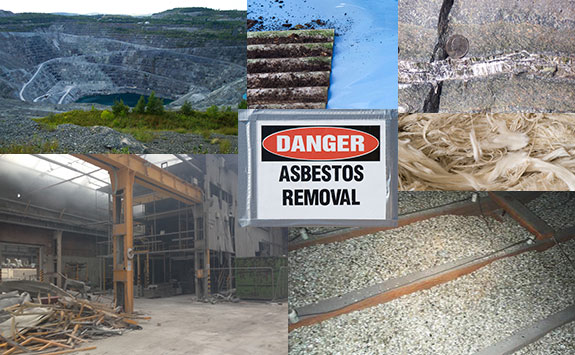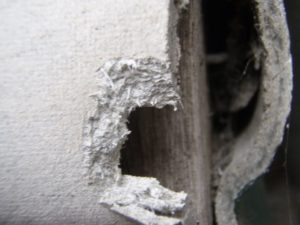Blog

23 Jan. 2018
Avoid Asbestos Exposure Get An Inspection Done Prior to Demolition
How Does Asbestos Exposure Happen
Asbestos exposure can be caused when asbestos fibers are be released into the air by the disturbance of Asbestos-Containing Material (ACM) examples include demolition work, building or home maintenance, repair, and remodeling. In general, asbestos exposure may occur only when the ACM is disturbed or damaged in some way to release asbestos particles and fibers into the air.
Health Effects From Asbestos Exposure
Exposure to asbestos increases your risk of developing lung disease, smoking greatly increases the risk. In general, the greater the exposure to asbestos, the greater the chance of developing harmful health effects. Disease symptoms may take many years to develop following exposure.
Asbestos-related conditions can be difficult to identify. Healthcare providers usually identify the possibility of asbestos exposure and related health conditions like lung disease by taking a thorough medical history. This includes looking at the person’s medical, work, cultural and environmental history.
When a doctor suspects an asbestos-related health condition, the physician can use many tools to help make the actual diagnosis. Some of these tools include physical examination, chest x-ray and pulmonary function tests. Your doctor may also refer you to a specialist who treats diseases caused by asbestos.
Three of the major health effects associated with asbestos exposure are:
- lung cancer
- asbestosis, a serious progressive, long-term, non-cancer disease of the lungs
- mesothelioma, a rare form of cancer that is found in the thin lining of the lung, chest and the abdomen and heart
For more information on these and other health effects of asbestos exposure see these websites
United States Environmental Protection Agency
Agency for Toxic Substances and Disease Registry
National Institute for Occupational Safety and Health NIOSH
Where Can I Find Asbestos
Asbestos is a mineral fiber that is a natural material that occurs in rock.
What Materials Contain Asbestos

Broken Wallboard
Because of its fiber strength and heat resistance asbestos it has been used in a wide variety of building construction materials for insulation and as a fire retardant for decades and still is being used. Asbestos has also been used in a wide range of manufactured goods, primarily in building materials (roofing shingles, ceiling and floor tiles, paper products, and asbestos cement products), friction products (automobile clutch, brake, and transmission parts), heat-resistant fabrics, packaging, gaskets, and coatings, for a more complete list.
Avoid Asbestos Exposure. Protect yourself and your family with an asbestos inspection before you remodel.
How Does Asbestos Exposure Happen
Asbestos exposure may occur when asbestos fibers are released into the environment by the disturbance of asbestos-containing material (ACM). While ACM is inert and poses little threat in most applications, activities such as demolition work, building or home maintenance, repair, and remodeling may disturb or damage ACMs, releasing dangerous particles and filaments and increasing risk of exposure to asbestos.
Health Effects From Asbestos Exposure
Exposure to asbestos increases your risk of developing lung disease and cancer. Generally, greater levels of exposure to asbestos equate to increased chances of developing these harmful health effects. Disease symptoms may take many years to develop following exposure, and these conditions can be difficult to identify.
Three of the major health effects associated with asbestos exposure are:
- Lung cancer
- Asbestosis, a serious progressive, long-term, non-cancer disease of the lungs
- Mesothelioma, a rare form of cancer that is found in the thin lining of the lung, chest and the abdomen and heart
For more information on these and other health effects of asbestos exposure see these websites
What is Vermiculite and What is the Concern
A mine near Libby, Montana, was the source for over 70 percent of all vermiculite sold in the United States from 1919 to 1990. Because at this mine there was also a deposit of asbestos with vermiculite from Libby was possibly contaminated with asbestos. The vermiculite from Libby was used in most of vermiculite insulation in the United States, was often sold under the brand name Zonolite. If you have vermiculite insulation in your home, you should assume this material may be contaminated with asbestos and be aware of steps you can take to protect yourself and your family from exposure to asbestos.
Why Call for an Asbestos Inspection Prior to Demolition
When considering a home remodel or commercial building renovation contact EnviroConsulting to have materials being disturbed tested to prevent asbestos exposure to workers. Our certified asbestos inspectors at EnviroConsulting can determine what materials should be tested prior to any demolition being done. We conduct preparatory initial inspections for all construction projects, to determine if an abatement is need.
Quick links to Website
Written by: Farren I Hauck, Susan Melka
